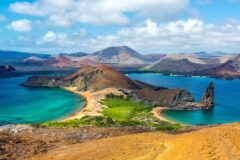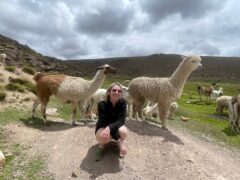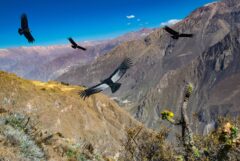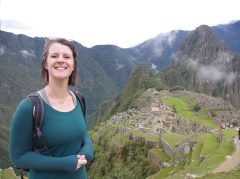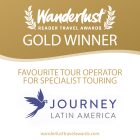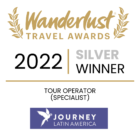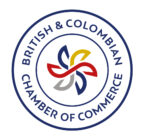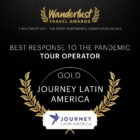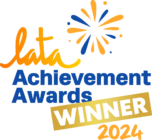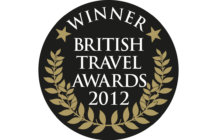Private Journeys
Signature Peru: Classic highlights of Peru
15 days from £3,625pp
(based on two people sharing & excluding flights)
Itinerary
 Map
Map
Day 1
Arrive in Lima and transfer to hotel in the Pacific coast district of Miraflores.
You will be met at the airport and escorted to your hotel by one of our local representatives. The half-hour drive to the hotel through Lima is not the most enchanting introduction to this city of extreme contrasts, but it does encapsulate the invigorating buzz of a modern-day Latin American capital.

Stay at -
Casa Andina Premium Collection Miraflores
Day 2
Guided tour of Colonial Lima and Larco Museum. Fly to Arequipa.
Lima is a vast, complex metropolis, with a history dating from the era of its wealth and importance to Imperial Spain to its current status as a dynamic, growing city of trade, industry and tourism.
Plaza San Martín, with its colonial churches, promenades and palaces marks the beginning of a guided tour that unearths much of the country’s turbulent past. En route, visit several palaces including the Torre Eagle Palace (built for the treasurer of the Royal Spanish fleet and considered to be the most striking of Lima’s 18th century mansions). Another building which borrows its architectural style from Baroque and Moorish Spain is the Monastery of San Francisco with its fascinating library and catacombs.
The final port of call is the private Larco Museum with its collection of beautifully modelled pottery, unique gold and silver work, mummies, and ceramics from pre-Inca civilisations. Afterwards, continue to the airport for a 1hr flight to the colonial university city of Arequipa.
Arequipa is Peru’s second city, a traditional rival to Lima, relatively calm and conservative in comparison to the dynamic capital. The buildings here are constructed from sillar, a white-grey volcanic stone, and appear translucent against a rich blue sky. The domes, spires and pillars add to a somewhat Middle Eastern aspect. The city lies at the foot of the slopes of the conical El Misti Volcano.

Stay at -
Casa Andina Premium Collection Arequipa
Day 3
City tour of Arequipa and Santa Catalina Convent, and Juanita mummy.
Take a guided tour of the city, strolling through its flowery plazas and shady lanes, visiting some of the most striking architectural masterpieces of the Spanish legacy. A highlight is the visit to the (mostly uninhabited) Santa Catalina Convent, a timeless, peaceful enclave, its walls painted in pastel hues, where its shady nooks and crannies are dotted with flowering potted plants. Wander through the tiny cobbled courtyards where orange trees flourish, peeking into the nuns’ vacant cells.
The tour finishes at the Museo Santuarios Andinos, now home to the ‘Juanita Mummy’, a beautiful maiden sacrificed to the Apu Ampato by Inca priests. It’s a fascinating little museum which houses the remains of several Inca mummies recently recovered from the tops of surrounding volcanoes and mountains. They have been superbly preserved by the freezing conditions, many were thought to have been sacrificed as offerings to the mountain gods over 500 years ago.

Stay at -
Casa Andina Premium Collection Arequipa
Day 4
Drive up through the Andes to Colca Canyon.
On the road to the Colca Canyon you’ll get a closer look at this magnificent scenery. The road crosses a desolate high plain and through a vicuña reserve. The vicuña, a smaller, more delicate, relative of the llama has fine wool which is literally worth more than its weight in gold. You may also come across vizcachas, alpacas, llamas and flamingoes all feeding on the coarse grasslands.
The route continues around the cavernous crater of an extinct volcano and over a high pass before emerging onto the lip of the Colca valley. From there you can look out over the vast network of meticulously terraced fields and minuscule hamlets. There’s a boxed lunch provided on the way, as you descend into the valley to your lodgings; dine at the lodge.

Stay at -
Colca Lodge
Day 5
Condor spotting excursion.
Rise early to continue by road, climbing the valley side to where the Colca itself is far below you, and beyond is a concertina of terraced fields of traditional Andean crops such as potatoes, quinoa and kiwicha. We reach the Cruz del Condor viewpoint at just before 8am . Here you can stand on a bluff looking into the deepest part of the canyon, where a patchwork of tawny colours spreads across the valley like a quilt, and watch as graceful condors soar effortlessly skyward from lofty crags and rocky ledges.
Along the way to the viewpoint there are a number of small villages where the women still wear traditional headwear and embroidered dresses of remarkable intricacy. Drive to the valley’s main town of Chivay, stopping at the villages of Maca and Yanque. Return to your lodge. After lunch, you have an afternoon at leisure.

Stay at -
Colca Lodge
Day 6
Drive to Lake Titicaca via Lampa.
A spectacular 6hr journey on a modern road leads across Andean highland moors to the lively port and University town of Puno, at 3,805m above sea level, squatting on the shores of Lake Titicaca. The scenery along the way is windswept and desolate and the vastness of the landscape yawns towards the distant horizon under a bright Andean sky.
En route, the occasional stop alongside a collection of small highland lakes may give you the chance to see flamingos feeding in the mineral-rich waters. There’s a worthwhile diversion to the isolated, rosy-hued town Lampa, with its quirky church and rather ghoulish catacombs, commemorating the outcome of a particularly gruesome battle between the indigenous people and the Spanish armies.The vast, indigo Lake Titicaca – almost an inland sea – sits astride the Peruvian-Bolivian border, and the fish-laden waters and surrounding fertile soil are the lifeblood of subsistence farming communities clustered in scores of adobe villages along the water’s edge. Legend has it that this mystical spot is the birthplace of Inca civilisation: the progeny of the Sun God sprung from its depths to found the empire in Cusco.

Stay at -
Posada del Inca Puno
Day 7
Visit Taquile Island, Luquina Chico and the floating Uros Islands.
Today you set out on the lake aboard a motor boat to visit the remote, tranquil island of Taquile: 7km long, it is devoid of roads and vehicles, its terraced hills scattered with pre-Inca ruins.
From here, continue by boat to the indigenous village of Luquina Chico on the Chucuito Peninsula. This community-based tourism initiative has strict controls over visitor access and a visit allows you a unique insight into local life.
In the afternoon, visit the Uros Islands. You alight on the floating islands, constructed entirely from the lake’s totora reeds – the same material used to build their canoes – and the ‘ground’ moves perceptibly beneath your feet.
During severe storms, the islands may break up into smaller islets. Once devoted to fishing, the inhabitants now earn their living mainly through selling handicrafts to tourists.

Stay at -
Posada del Inca Puno
Day 8
Travel by train across the altiplano to Cusco.
Take a spectacular ten-hour train journey from Puno to Cusco, climbing to over 4,300m and taking you through the remote highland plains – a landscape of adobe huts, llamas and sheep, flanked by snow-capped mountains. The train offers a unique experience, with high levels of comfort and a gourmet lunch served en route.

Stay at -
Casa Andina Premium Collection Cusco
Day 9
City tour, including nearby Inca ruins.
The name Cusco derives from the Quechua word for navel, indicating its location at the centre of the Inca Empire, which reached its zenith at the same time as England was fighting the Wars of the Roses. Today its many impressive original Inca walls display extraordinary craftsmanship, while the bustling squares are dotted with ornate baroque colonial churches.
It’s a vivacious city, where shoeshine boys and postcard sellers jostle for your attention in cobbled streets lined with handicraft shops and cafés. In the evening, the town centre fills with people flocking to the many restaurants, bars and cafés.
Today you are led on a tour of the city. You visit Q’oricancha, once the principal Inca Sun Temple, with extraordinarily intricate stonework, and then explore the colossal zigzag walls of Sacsayhuamán, brooding on a hillside above Cusco. In 1536 a desperate and defining three-day battle was fought between the Spaniards and the Incas around this fortress. The first conquistadores to see it were awestruck, and centuries later it is still an extraordinary and imposing sight.

Stay at -
Casa Andina Premium Collection Cusco
Day 10
Visit Chinchero village, Maras salt pans and Moray archaeological site.
Drive through stunning countryside, against a backdrop of the purple snow-capped Andes to Chinchero, 28km from Cusco. Chinchero is an attractive Indian village with a colourful Sunday market. The central square has a splendid Inca wall on its western side, etched with 10 trapezoidal niches, each large enough to hold a human being. Also on the square, sitting on its upper level, is the town’s colonial church, built of adobe and decorated internally with beautiful floral designs.
Continue to the Maras saltpans, a series of terraces where a natural source of saline water is evaporated by the strong Andean sun. In use since Inca times, the saltpans continue to be worked by the local community. You’ll also visit Moray, an Inca experimental agricultural centre. It comprises numerous terraces carved into a large, natural amphitheatre, each one with a different microclimate from those above and below.
Time permitting, you can also visit a traditional weaving project, where local women demonstrate the weaving technique and you can learn about the use of natural dyes and patterns unique to the numerous mountain communities surrounding the Sacred Valley – also a great opportunity to buy excellent quality products, directly from the producers. Return to Cusco for the night.

Stay at -
Casa Andina Premium Collection Cusco
Day 11
Explore the Sacred Valley of the Incas.
Today, head further down from the high plains to explore the fertile Sacred Valley of the Incas. Once the bread-basket of the Inca Empire, it was heavily populated in imperial times and scores of archaeological sites remain, where well-preserved ruins bear witness to the highly developed society that the Incas created. The drive passes through or close to several of the villages and temple fortresses that pepper the valley.
A guided tour exploring the valley. The drive takes in several of the villages and temple fortresses that pepper the valley. You visit Pisaq, both the village, and the terraces and fort high above. The engineering and preservation are unrivalled. From the flat valley floor the sculpted hillside rises up like a green staircase to the heavens.
Have lunch at Rancho Wayra, where there’s a Peruvian Paso horse show and also a traditional marinera dance.
Continue along this picturesque, patchwork valley to the fortress/temple of Ollantaytambo. The snow-frosted Andean cordillera forms a stunning backdrop. Ollantaytambo, sitting strategically at the gateway to the Amazon basin, was never captured by the Spanish conquistadores, but the inhabitants decided that the settlement was too vulnerable and would eventually fail, and so they abandoned it. The fortress, the colonial grid plan and the Inca foundations are still intact and there are wonderful views down over the sloping hillsides and into the fertile valley.
You spend the night in the mystical surroundings of the Sacred Valley, beneath the dome of a vast, clear Andean sky.

Stay at -
Hotel Pakaritampu
Day 12
Day at leisure in the Sacred Valley
Enjoy a day at leisure to relax or further explore the treasures of this fascinating part of Peru.

Stay at -
Hotel Pakaritampu
Day 13
By train to Machu Picchu, guided tour. Overnight Machu Picchu.
Travelling by rail (1.5hrs) from Ollantaytambo, you reach the ruins of Machu Picchu. As the river Urubamba enters its narrow gorge between thickly-forested granite hills, there is room only for a single track, which hugs the right bank and passes through hamlets that are no more than a collection of shacks beside the railway.
Close to the foot of the mountain on a saddle of which the citadel was built is the bustling town of Machu Picchu (formerly known as Aguas Calientes), dedicated to serving the many visitors with artisan markets, bars and restaurants.
The majestic ruined city, reclaimed from tropical cloud forest, is reached by a sinuous road, or on foot up a near vertical rocky path. The American explorer Hiram Bingham discovered it in 1911, by which time it was completely buried beneath jungle vegetation. It is perhaps the ruins’ location, on a ridge spur amid forested peaks and above a roaring river canyon, that most ignites the imagination.
You will have a guided tour of the ruins, completing one of the set circuits around the stone buildings and llama-dotted grassy ledges, before heading back down to the town for an overnight stay.

Stay at -
Inkaterra El Mapi
Day 14
Optional revisit to the site, return to Cusco.
Getting up early and taking the first buses up to the ruins is well worth it… The site is virtually empty and the early morning mists swirl around the surrounding mountain tops. There’s an option to climb either Huayna Picchu or Machu Picchu Mountain (entrance to these mountains is not included and must be booked in advance); alternatively enjoy the thermal baths or walks in the village below. Return to Cusco by rail and road (about 4 hours).

Stay at -
Casa Andina Premium Collection Cusco
Day 15
Depart for international flight, via Lima.
Outline itinerary
Day 1
Arrive in Lima and transfer to hotel in the Pacific coast district of Miraflores.
Day 2
Guided tour of Colonial Lima and Larco Museum. Fly to Arequipa.
Day 3
City tour of Arequipa and Santa Catalina Convent, and Juanita mummy.
Day 4
Drive up through the Andes to Colca Canyon.
Day 5
Condor spotting excursion.
Day 6
Drive to Lake Titicaca via Lampa.
Day 7
Visit Taquile Island, Luquina Chico and the floating Uros Islands.
Day 8
Travel by train across the altiplano to Cusco.
Day 9
City tour, including nearby Inca ruins.
Day 10
Visit Chinchero village, Maras salt pans and Moray archaeological site.
Day 11
Explore the Sacred Valley of the Incas.
Day 12
Day at leisure in the Sacred Valley
Day 13
By train to Machu Picchu, guided tour. Overnight Machu Picchu.
Day 14
Optional revisit to the site, return to Cusco.
Day 15
Depart for international flight, via Lima.
Inspired by this trip
Our exciting range of articles on Latin America explore everything from iconic destinations and lesser-known cultural gems to delicious traditional recipes. You’ll also find exclusive travel tips, first-hand client reviews and the chance to get your personal questions answered by our travel experts.
Papagaio
Your edit for Latin American inspiration
Our exciting range of articles on Latin America explore everything from iconic destinations and lesser-known cultural gems to delicious traditional recipes. You’ll also find exclusive travel tips, first-hand client reviews and the chance to get your personal questions answered by our travel experts.
View Extraordinary Inspiration